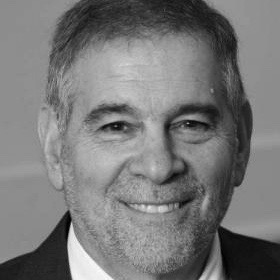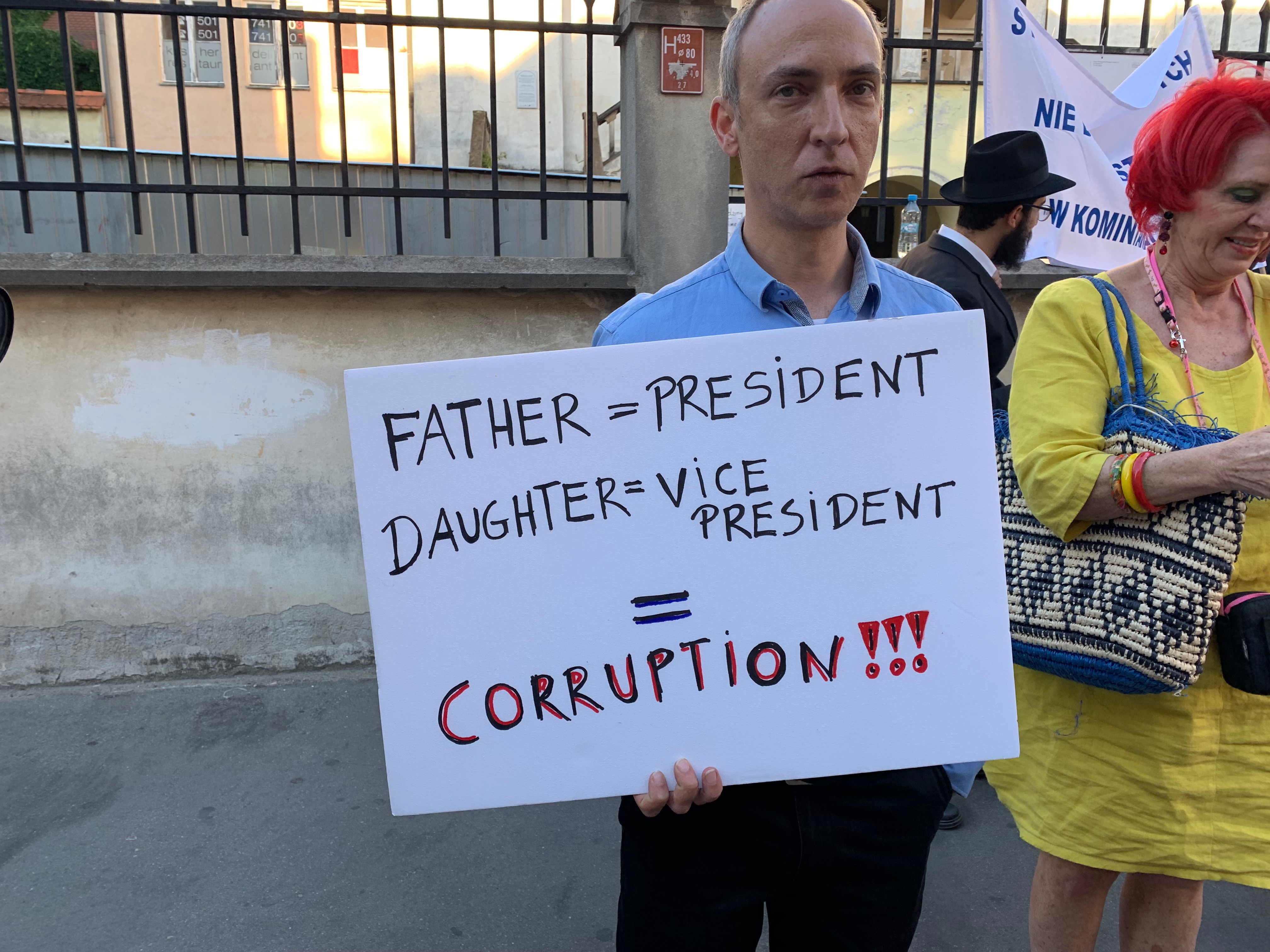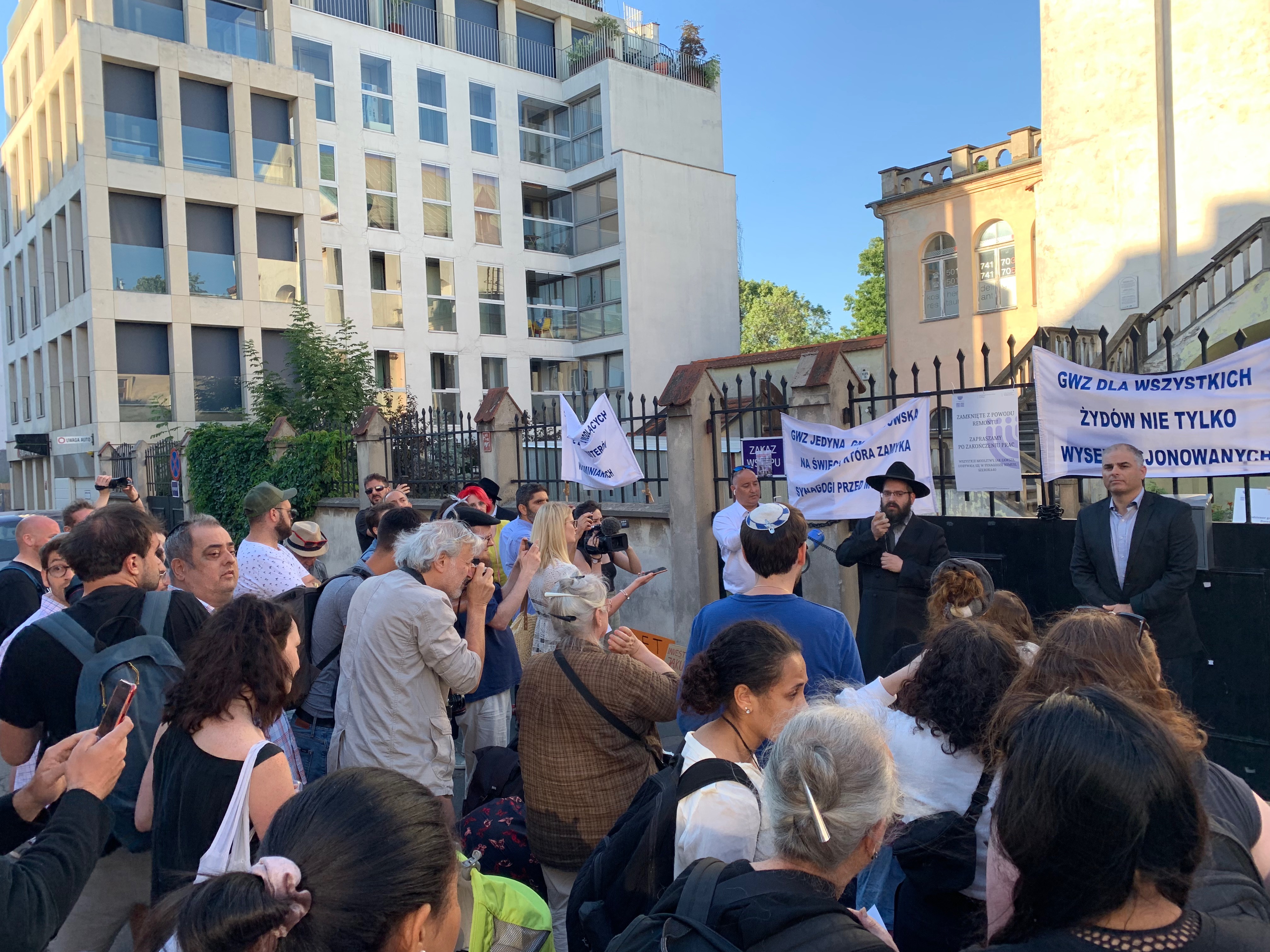
Last week I was in Poland for five days to participate in events marking the rebirth of Jewish life — not death — in Krakow. My brief stay began with the Ride of the Living, the annual 60-mile bike ride from the gates of Birkenau to the doors of the Jewish Community Center in Krakow. Two hundred and fifty riders from around the world participated in the annual ride, including 90-year-old Krakow native and Auschwitz survivor, Bernard Offen.
The ride is a Jewish Community Center signature event, coinciding with the Jewish Cultural Festival, a weeklong celebration of Jewish art, music, literature, film, philosophy, theater, comedy and klezmer. People performing and lecturing: Israelis, Americans, Poles, Europeans — all giving voice to the magnificent dynamism of 21st century Jewish creativity.
The streets of Krakow were filled with people. Kazimierz, the traditional home of the Jewish community, was vibrant, vital and crowded — teeming with life. Every Jewish space was filled to capacity. I felt proud, moved, inspired, even hopeful.
Shabbat evening was celebrated with a kosher Shabbat dinner for 750 Jews from around the world — one of the most marvelous nights to be Jewish in Krakow. Attendance grows every year, so this was once again the largest Jewish dinner since before the Holocaust.
On Shabbat morning it was standing room only at Krakow Izaak Synagogue. Shabbat afternoon was filled with lectures and art exhibitions. Most notable was Chuck Fishman’s 1975 photographic essay on Krakow about the long years of Communist rule after the anti-Semitic purges of 1957and 1968 when it appeared to all that Jewish life was at its end.
The pictures are haunting; the Jews are old, dispirited and tired. They were the walking wounded. The buildings were empty, shabby, seemingly on their last legs. I imagined that there once was a city of Krakow, where Jews were one-third of the population. But the Jews are no longer. The city is haunted by the presence of their absence and the absence of their presence.
On Saturday night, June 29, there was a concert that lasted into the wee hours of the morning, filled with Jewish music from around the world. Twenty thousand people filled the Sceroka Street Square, enjoying Jewish life at its most vital. It was perhaps more fun for Poles to be with Jews that evening than at any time in the 800 years prior when Jews lived in Poland.
I walked home from the concert exhausted but exhilarated; feeling that Jewish life was not at its end, but instead transforming before my eyes. To quote Emory University Scholar Deborah Lipstadt — who was in town to speak about her new book on anti-Semitism —the oy had been overwhelmed by joy — at least for that evening.
Masked armed guards stood behind the locked gates of the Izaak Synagogue, barring Jews from morning services.
On Sunday, June 30, I gave a lecture at Jagiellonian University to non-Jewish Polish teachers and students spending a week at Poland’s most distinguished University studying the Holocaust. We have all heard of Polish anti-Semitism, but here were students interested in knowing their own history — a history that includes the Jews and the Shoah. In 1939, 1 in 10 Poles (10% of the population) were Jewish, and many of Poland’s urban population were Jews. Some towns and villages had majority Jewish populations. The cities, towns, villages and hamlets are still there; they still have the same names but the Jews are no longer there and these Poles want to know who they were, what they were, and why they are no longer there. They want to know their history — the truth of their history even as some in their government and institutions want to rewrite that history.
I attended the opening of a powerful new exhibition just outside the gates of Auschwitz. The subject was deeply significant: The spiritual struggle of Jews, Roman Catholics and Roma to maintain their faith event in the depths of hell that was Auschwitz. The art was majestic; the research by Henri Lustiger-Thaler was sensitive, economical yet insightful. Then there was the beautiful photography by Caryl Englander, and the exhibition’s design by a Jewish son of Poland whose extended family was murdered at Auschwitz, Daniel Libeskind.
The exhibition, created at the initiative of the Amud Aish Museum in Brooklyn, (a Charedi institution), and the Auschwitz State Museum, depicts in poetic words and moving portraits the spiritual journey of survivors to live with God and integrity at the epicenter of evil. I came away from the opening with deep respect for the resiliency of these survivors and the power of their faith.
And then: Masked armed guards stood behind the locked gates of the Izaak synagogue, barring Jews from morning services.
Masked armed guards? It must have been anti-Semitism. How low could the Poles go, especially in this week of cultural celebration?
But it was not anti-Semitism. It was the ugly, vicious, anti-Jewish act of the organized the Jewish community against the rebirth of Jewish life in Krakow.
Dov Landau, a 90-something Holocaust survivor and Bobover Chasid was in tears. He had seen this before, but back then, it was the deeds of enemies, not his fellow Jews. Astounding. Incomprehensible. Could Jews do this to Jews?
Rabbi Avi Baumol was worried. A daily attendee at the minyan, his tefillin were inside. Luckily, he had a spare pair in his adjacent apartment. Dovid Singer, another Bobov Chasid — a Brooklynite who visits Poland three or four times a year — was frantic. It was Monday, July 1. The Torah had to be read. Where could he get a Torah and a minyan? Jonathan Ornstein stood by his window overlooking the synagogue, not quite believing what he was seeing. His vantage point enabled him to photograph moment after moment, face after face.
A word of background: The Gmina, the formal Jewish community, is the heir to Jewish institutional property. Private Jewish property has not been restored in Poland but institutional property has been returned to the Jewish community. In Krakow, the holdings of the Jewish community are significant and yet these vital resources have been treated as if the community were a private business, intent on maximizing profit with no responsibility to the continuation and the enhancement of Jewish life.
One family has ruled for the past 70 years. The current patriarch, Tadeusz Jakubowicz, is president; his daughter Helena, vice president; his son-in-law, a powerful force behind the scenes. They have ruled through communism and through nascent democracy and even now, during the right-wing authoritarian epoch of contemporary Polish history. And they have ruled not as if they were custodians of Jewish communal resources but as if this were a family enterprise.
They ordered the armed guards. The Gmina is a closed community. It does not welcome new members, even if they are observant, distinguished Jews. Professor Jonathan Webber, a religious Jew and a leading authority on the Jews of Galicia, had to sue in a European Union court to join. Jonathan Ornstein, the dynamic and charismatic leader of the Jewish Community Center (JCC) was expelled, seemingly $8 behind in his dues. His application for reinstatement was rejected; guards barred his entry into a community meeting to plead his case. Both are halachic Jews. The Gmina has some 125 members; the JCC has more than 700, most of them halachic Jews, thereby eligible for membership, but were restricted from participating in the Gmina.
The Gmina had the Izaak Synagogue returned to its possession when Jewish property was returned. It was restored not by the Gmina but by donations from Jews around the world. As landlords, the Gmina wanted to get rid of its current tenant. But it had a lease with the synagogue so it decided to force them out by raising the rent 1,000%. It didn’t matter that the Izaak was a functioning synagogue with services morning and evening, a kosher restaurant next door that takes advance reservations to serve observant Jews who visit Krakow and Auschwitz every week.
Had the Poles done this to the Jews, the entire Jewish world would have protested. When Jews do this to fellow Jews, our protests cannot be any less intense.
In the weeks before the gates were locked, the Gmina shut off the electricity. When the synagogue bought a generator, they turned off the water on the eve of the Jewish Cultural Festival, when thousands of Jews planned to visit Krakow, including youth groups and organized adult tours. Many, if not most of them, would have visited the synagogue. Their behavior was a hillul HaShem, a desecration of God’s holy name.
I have been visiting Krakow regularly since the 1970s. I was there when the synagogues were closed because there were no Jews to attend. I was at the magnificent temple for what seemed to be its last service. The Izaak, before its restoration, was a crumbling building. Built more than a quarter of a millennia ago, it seemed as if would not survive into the 21st century. But then the restoration began, bringing with it the possibility of rebirth.
I have heard rumors of corruption. I have no evidence. I have examined no books but I have been in the presence of Jewish leaders of international renown, of distinguished rabbis, of people “in the know” who spoke knowingly of such corruption; who winked and made snide remarks but who were unwilling to take action.
The purpose of a Jewish community is to serve the needs of the Jewish people; to protect, enhance and deepen Jewish life; to provide education for the young and the old; to take care of the needy and the infirm. The religious purpose of a Jewish community is to provide places of prayer and Torah study. This Gmina has failed.
It is an obstacle to the rebirth of Jewish life. I say this because I have seen it. I stake my reputation on this charge.
Barring the gates makes manifest to what depths the Gmina will sink. Had the Poles done this to the Jews, the entire Jewish world would have protested. When Jews do this to fellow Jews, our protests cannot be any less intense. World Jewry must step in. It provides significant support for the Jews of Poland. It has important resources and influence. Jewish leaders must stop making snide comments in private and then turn a blind eye to such behavior. They must speak out and they must act.
Krakow Jewish life is at once vital and vibrant, a promising success story of Jewish rebirth, yet at the same time, its official representatives are engaged in vile behavior. They will cripple the rebirth. World Jewry has empowered the rebirth. It has tolerated the vile. It can no longer do both. This is a moment of decision.
Michael Berenbaum is director of the Sigi Ziering Institute and a professor of Jewish Studies at American Jewish University.

























 More news and opinions than at a Shabbat dinner, right in your inbox.
More news and opinions than at a Shabbat dinner, right in your inbox.